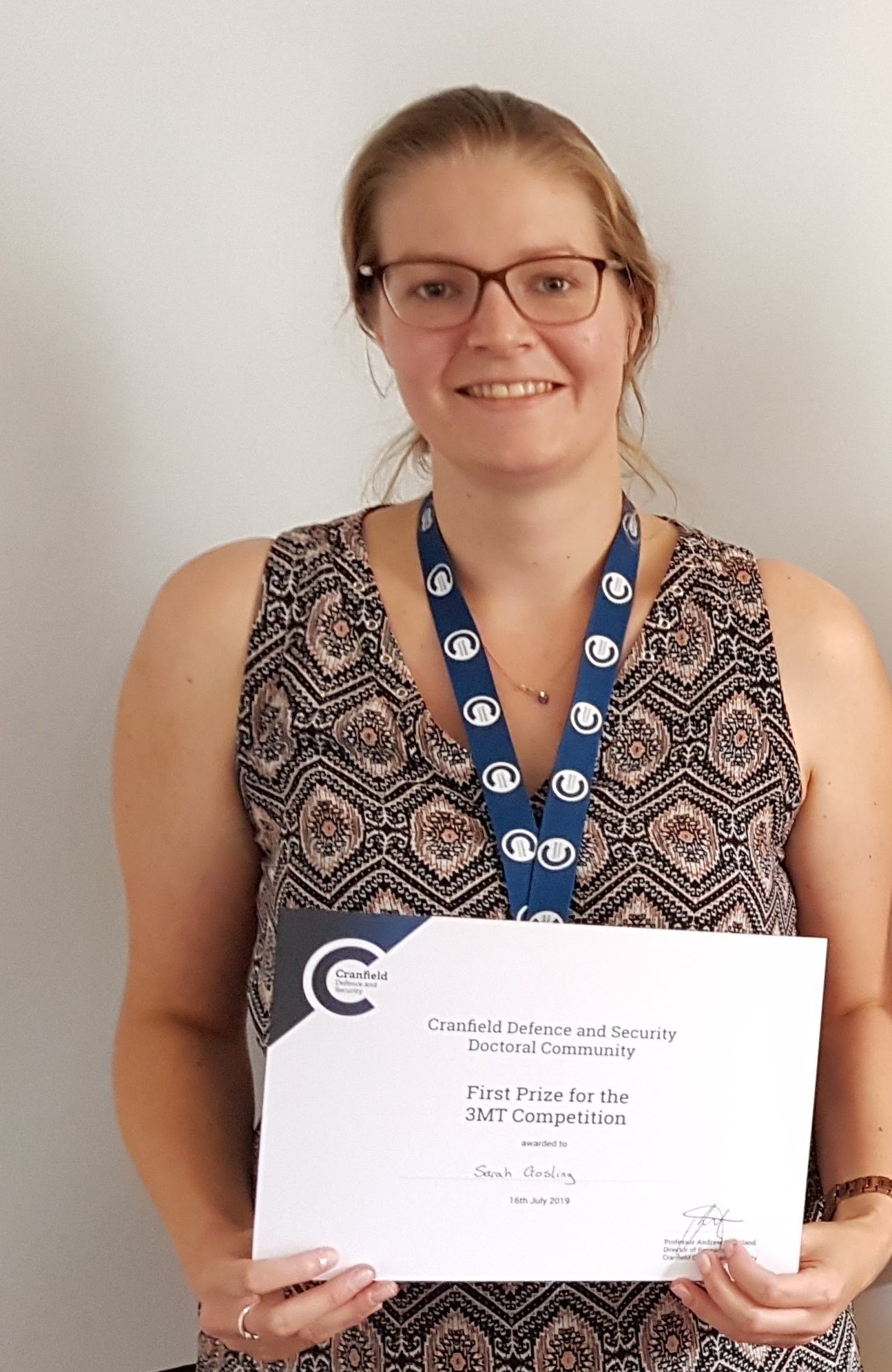Meet Cranfield Defence and Security, 3MT competition winner
29/07/2019

An interview with Cranfield Defence and Security 3MT competition winner, PhD student Sarah Gosling.
Developed by Queensland University, the 3MT competition challenges research students to concisely articulate their research to a non-specialist audience in just three minutes (using just one static slide). Sarah Gosling, a PhD student at Cranfield Defence and Security, rose to this tough challenge and was awarded first place with her research on breast microcalcifications as biomarkers of tissue pathology. Sarah gave us a little more insight into her research project at Cranfield University.

How did you get into being a PHD student at Cranfield University?
I’ve always been interested in doing cancer research, which is what my topic’s about. I actually came across this PhD by chance. It’s different to what I’ve done before, because I did a biology degree and this is more physics and chemistry and so I thought it looked really interesting so I went for it and I actually fell in love with the PhD.
Can you tell us a bit more about the research you are doing and how you go about gathering it?
I get samples of breast tissue from all over the world and I use very high powered x-rays to look at them and that requires me to go to a separate facility to actually collect all of the data together. It’s often 72 – 96 hours at a time, in a block, which is really hard work at the time. Then I take all of that data and build a model of whether or not the calcifications, which is what I am looking at, are a relevant part of breast cancer.
How long does it take to gather the research?
Because I have to gather the data in blocks at a time, I get lots of data all in one go, but then actually analysing it all will take a few months at a time and looking at whether there are patterns in the data takes a few more months as well.
What’s next for your research?
I have got a big data collection in September so that will be the big start to my research and hopefully coming up with some ideas and draw some conclusions from the data. I think there are lots of things that can be done with the research after my PhD as well because it is quite a new field.
Why did you choose Cranfield University to do your research?
Firstly, the project itself was really interesting and obviously it is based at the Cranfield Defence and Security site which is a very unique place to work and that attracted me as well because of the opportunities that the site offers.
Categories & Tags:
Leave a comment on this post:
You might also like…
Keren Tuv: My Cranfield experience studying Renewable Energy
Hello, my name is Keren, I am from London, UK, and I am studying Renewable Energy MSc. My journey to discovering Cranfield University began when I first decided to return to academia to pursue ...
3D Metal Manufacturing in space: A look into the future
David Rico Sierra, Research Fellow in Additive Manufacturing, was recently involved in an exciting project to manufacture parts using 3D printers in space. Here he reflects on his time working with Airbus in Toulouse… ...
A Legacy of Courage: From India to Britain, Three Generations Find Their Home
My story begins with my grandfather, who plucked up the courage to travel aboard at the age of 22 and start a new life in the UK. I don’t think he would have thought that ...
Cranfield to JLR: mastering mechatronics for a dream career
My name is Jerin Tom, and in 2023 I graduated from Cranfield with an MSc in Automotive Mechatronics. Originally from India, I've always been fascinated by the world of automobiles. Why Cranfield and the ...
Bringing the vision of advanced air mobility closer to reality
Experts at Cranfield University led by Professor Antonios Tsourdos, Head of the Autonomous and Cyber-Physical Systems Centre, are part of the Air Mobility Ecosystem Consortium (AMEC), which aims to demonstrate the commercial and operational ...
Using grey literature in your research: A short guide
As you research and write your thesis, you might come across, or be looking for, ‘grey literature’. This is quite simply material that is either unpublished, or published but not in a commercial form. Types ...






